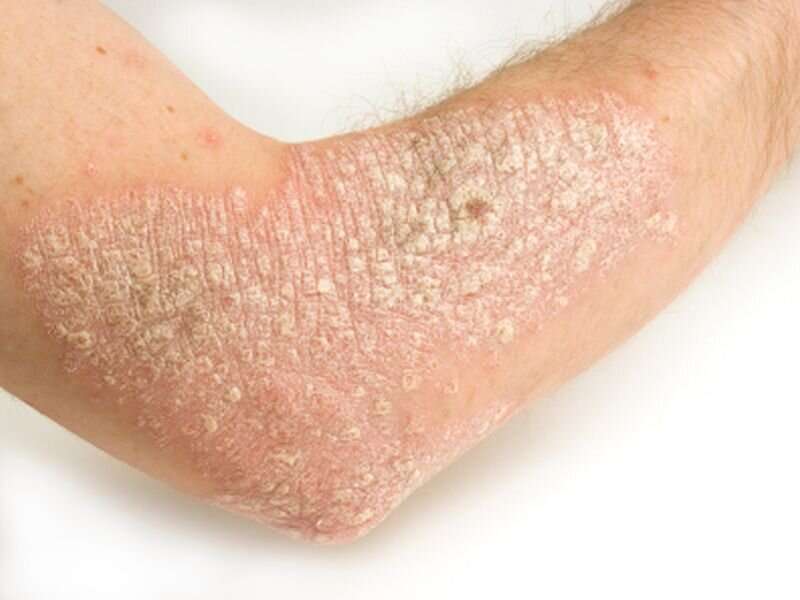

(HealthDay)—Patient characteristics at onset can help to estimate the long-term course of psoriasis with good discriminatory power, according to a study published online April 14 in JAMA Dermatology.
Axel Svedbom, from the Karolinska Institutet in Stockholm, and colleagues sought to describe the clinical course of psoriasis and identify possible indicators of long-term outcomes among a noninterventional cohort of patients enrolled between 2001 and 2005 and followed for 10 years. The analysis included 721 patients (≥15 years) with recent-onset psoriasis (<12 months duration).
The researchers found that the cumulative incidence of severe psoriasis at 12 years from enrollment was 21 percent. At follow-up, 77 of 389 patients with plaque onset (20 percent) and 56 of 116 with guttate onset (48 percent) had minimal disease activity without treatment, and 24 percent overall had psoriatic arthritis. The cumulative incidence of severe disease in patients with plaque phenotype, above-median disease activity, and scalp lesions was 52 percent versus 11 percent in patients with below-median disease activity at inclusion. Nearly six in 10 patients with peripheral enthesitis (59 percent) had psoriatic arthritis after 10 years versus 12 percent without initial joint pain. A severe disease course was also associated with smoking (hazard ratio, 1.70) and activating genes in the interleukin-23 pathway (odds ratio, 1.55). Early initiation of systemic therapy was associated with a lower risk for severe disease at 10 years versus later initiation of systemic therapy (odds ratio, 0.24).
“In the light of the persistent nontreatment and undertreatment of both psoriasis and psoriatic arthritis, the identified subgroups with elevated risk for severe skin disease and psoriatic arthritis merit close follow-up or specialist referrals to facilitate timely and appropriate intervention,” the authors write.
Source: Read Full Article